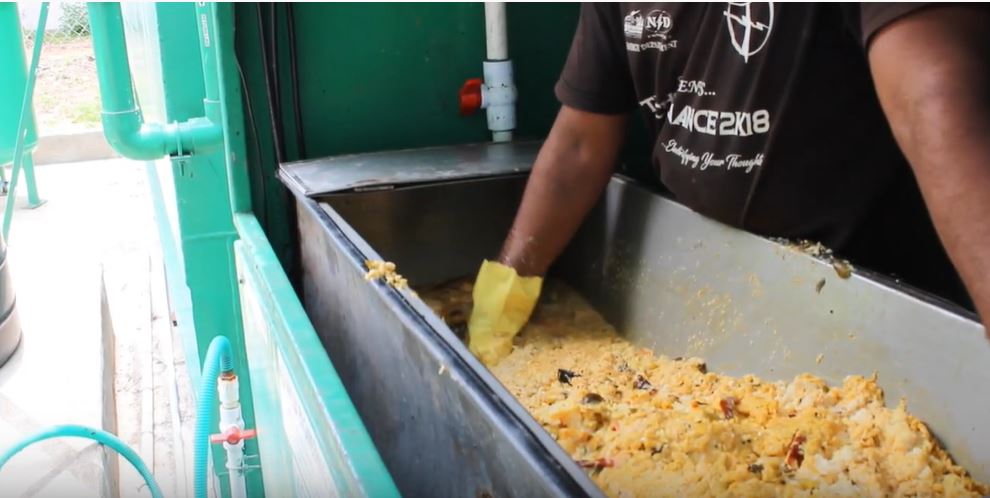Girl Quits US Job, Helps Turn 12000 Tons of Waste Into 600+ Tons of Cooking Gas!
The waste management solution provided by Shruti Ahuja is helping bulk waste generators across India lower their carbon footprints and save on gas bills!

When Shruti Ahuja left her cushy job in the United States to bring about a positive change in India, little did she know that one day her work could be a game changer in the waste management industry.
In 2010, she returned to her hometown, Hyderabad, with an aim to explore the entrepreneurship avenues in the country. She had a couple of business ideas ready and one among them was to make waste valuable.
Pursuing this idea, Shruti founded Ahuja Engineering Services Pvt Ltd in 2012, a company that has prevented over 12,000 tonnes of organic waste from entering landfills, saved 600+ tonnes of LPG and prevented the generation of more than four lakh tonnes of carbon dioxide.
Take a pledge against single-use plastic now. Check out these beautiful 100 per cent eco-friendly cutlery made from sustainable materials.
And today, almost a decade later, the Electrical Engineering graduate from the University at Buffalo, New York, has established 16 biogas plants that convert organic waste into LPG or cooking gas across India.
Finding Inspiration In A Poultry Farm
Back when she was exploring business ideas, Shruti accompanied her dad to visit a poultry farm. Her father’s engineering company was working with poultry farmers at the time. During the visit, she learnt about the massive problem of poultry waste.
“On research, I found that India generates approximately 23 million tonnes of poultry waste per year and on converting the waste through biogas, it can produce 270 megawatt of power. Unfortunately, biogas conversion is not common in the country,” shares the 32-year-old.
The flip side of not treating poultry waste scientifically is pollution and health effects. For instance, nitrogen and phosphorus present in poultry excreta can pollute water and the ammonia emitted can lead to infections.
That interaction with the poultry farmers was a turning point and Shruti had found the field she wanted to venture into.
She started researching on technologies that convert biodegradable waste into biogas and in 2012, came in contact with Dr Dr A Gangagni Rao, Chief Scientist at the Indian Institute of Chemical Technology (CSIR-IICT).
Shruti collaborated with the IICT Bioengineering & Environmental Sciences (BEES) division and worked on an organic waste anaerobic gas lift reactor (AGR). In the same year, Shruti’s company got the license for the biomethanation technology. Using the experience she earned, she built a digester.
With her savings and contributions from her parent’s, she set up the digester in their farm on the outskirts of Hyderabad. For the next couple of months, Shruti and her team fed different kinds of biodegradable wastes like food, animal excreta and leftover vegetables from the wholesale market into the digester.
“We conducted numerous trials on the digester and every failure was one step towards improvement. After a point, I was confident to bring the technology in the market and sell it commercially,” she says.
Entering the market was a challenging considering the lack of attention paid to waste management concepts like recycling and reusing.
“Waste is not considered a viable and profitable industry. The common notion surrounding garbage is that it should reach trenching grounds. We have a long way to go before we realise its potential in India,” she adds.
How Waste-to-Energy Technology Works

- The organic waste is shredded and soaked in water in the Feed Preparation Tank (FPT) for the preparation of slurry.
- In anaerobic biomethanation process, organic substances are first solubilised and hydrolysed to produce fermentative intermediates.
- Microbial culture is added to fasten the process and for digestion of organics, making the process highly efficient.
- The organic slurry is then fed into the digester that is designed for the high rate biomethanation of organic substrates like food and vegetable waste.
- A special culture (bacteria consortium) seeding is provided in the digester, at the time of commissioning. This culture is specifically trained for digesting food and vegetable waste, largely increasing the breakdown efficiency and making the process highly efficient.
- Slurry and gas mixing provision is also included in the digester to felicitate even distribution of slurry over the bacterial culture.
- After trapping moisture and scrubbing off hydrogen sulphide from the biogas produced, it is collected in a gas-holder and a pressurised gas tank.
- This biogas is pipelined to the kitchen to be used as a cooking fuel, replacing LPG.
- The carbon in the slurry is removed in the form of biogas, whereas all the other nutrients found in the feedstock are conserved in the effluent.
- The effluent, a liquid biofertiliser, with high nutrition content can be pumped for land application and organic gardening purposes.
Finding A Breakthrough In A Noble Cause
In 2014, the Akshaya Patra Foundation signed a contract with Shruti’s company to install a waste-to-biogas plant in Bellary, Karnataka. The plant has the capacity to convert 1,000 kilos of waste per day. It produces up to 140 cubic metres of biogas/day that is equivalent to 60 kilos of LPG or four cylinders.
The Akshaya Patra Foundation is known for its pan-India mid-day meal programmes covering 10,000 schools and providing meals to 1.3 million children every day.
Since then, Shruti’s company has installed nine similar plants in different branches of Akshaya Pratra including five in Gujarat, two in Karnataka and one each in Odisha and Uttar Pradesh.
“No industry, today, is independent of waste. With every organisation generating tonnes of waste daily, recycling or reusing process becomes crucial. If leave the waste on landfills, it can generate toxic effluents. Through this biogas plant we are not only converting waste but also saving on our gas bills,” Jatin Upadyay, Project Manager Projects at Akshaya Patra Foundation (Gujarat) tells TBI.

Besides the NGO, Ahuja company is also helping multiple bulk generators manage their waste scientifically.
For instance, the Kurnool Agricultural Market Committee in Andhra Pradesh adopted the waste-to-energy technology in 2018 to deal with tonnes of waste that gets generated in the wholesale market.
The government committee has a kitchen in the Kurnool market that provides lunch to farmers who visit from faraway places to sell their produce.
“500 kilos of waste generated per day through cooked food and leftover vegetables is treated scientifically through the digester that gives out 18 kilos of LPG equivalent to one cylinder per day. The conversion process is easy, healthy and efficient,” Jaya Lakshmi, Selection Grade Secretary, Agriculture Market Committee, Kurnool tells TBI.
The biogas technology is also solving the problem of leachate found in dumpyards. Leachate is a liquid that drains from the landfills and its generation is a major problem as it causes significant threat to surface water and groundwater.
The Greater Hyderabad Municipal Corporation (GHMC) treats wet waste collected at a dumpyard in Jowahar Nagar every day. Close to 5,000 kilos of waste and landfill leachate produces 300 units of electricity per day through the digester.
This technology is also used at CVR College of Engineering, Osmania University Campus, Capgemini Campus, Bowenpally Vegetable Market Yard and CSIR-IICT, among others.
The company is now working to scale up its activities and reach bulk waste generators like hotels, food processing industries, hospitals, religious places, educational institutions, slaughter houses and so on. The technology of Ahuja Engineering Services Pvt Ltd can convert one tonne of food waste into 60 kilos of LPG gas which is equivalent to four cylinders!
With India generating 62 million tonnes of waste annually and 60 per cent of it being wet or biodegradable, efforts by people like Shruti Ahuja can go a long way in changing the waste management game in India.
You can get in touch with Ahuja Engineering Services Pvt Ltd here.
Also Read: Mumbai NGO Will Turn Your Donated Plastic Waste Into Pens, Bins & Benches!
(Edited by Saiqua Sultan)
Like this story? Or have something to share?
Write to us: [email protected]
Connect with us on Facebook and Twitter.

Similar Story

How a Trip to Kolkata Influenced a Family’s 100-YO Legacy of Brewing Tea in Hyderabad
The Taiyebi family started Finjaan Cafe in the Banjara Hills of Hyderabad. Here they provide a traditional Chinese tea ceremony experience. This is how this unique cafe came into existence.
Read more >
If you found our stories insightful, informative, or even just enjoyable, we invite you to consider making a voluntary payment to support the work we do at The Better India. Your contribution helps us continue producing quality content that educates, inspires, and drives positive change.
Choose one of the payment options below for your contribution-
By paying for the stories you value, you directly contribute to sustaining our efforts focused on making a difference in the world. Together, let's ensure that impactful stories continue to be told and shared, enriching lives and communities alike.
Thank you for your support. Here are some frequently asked questions you might find helpful to know why you are contributing?


This story made me
-
97
-
121
-
89
-
167












